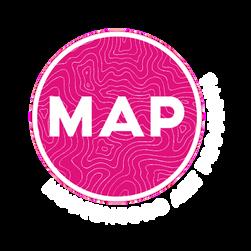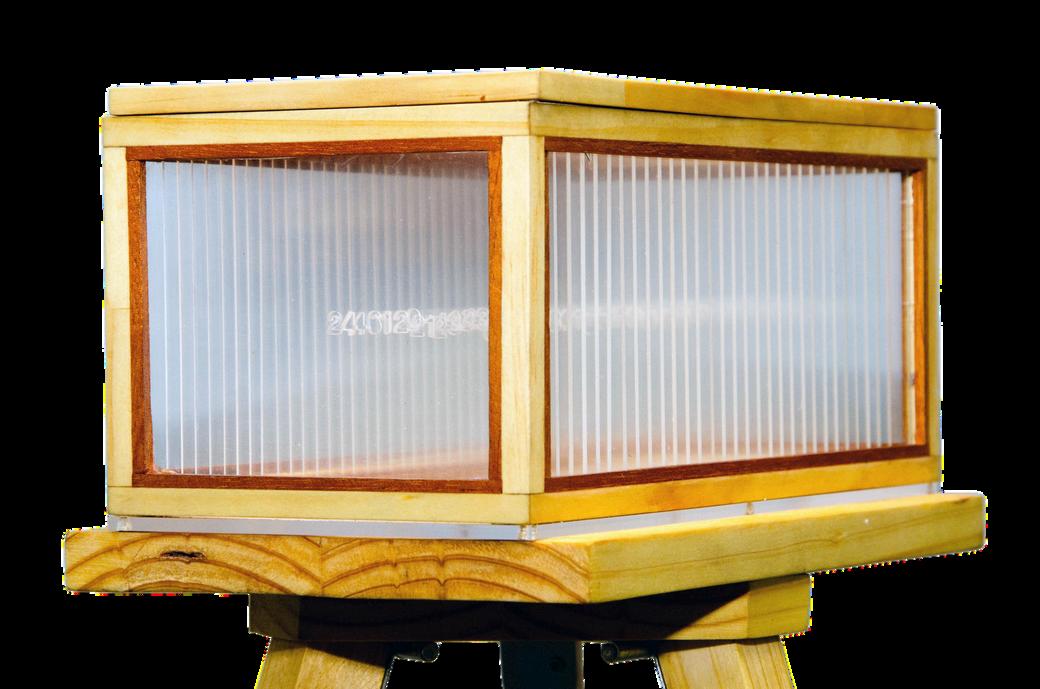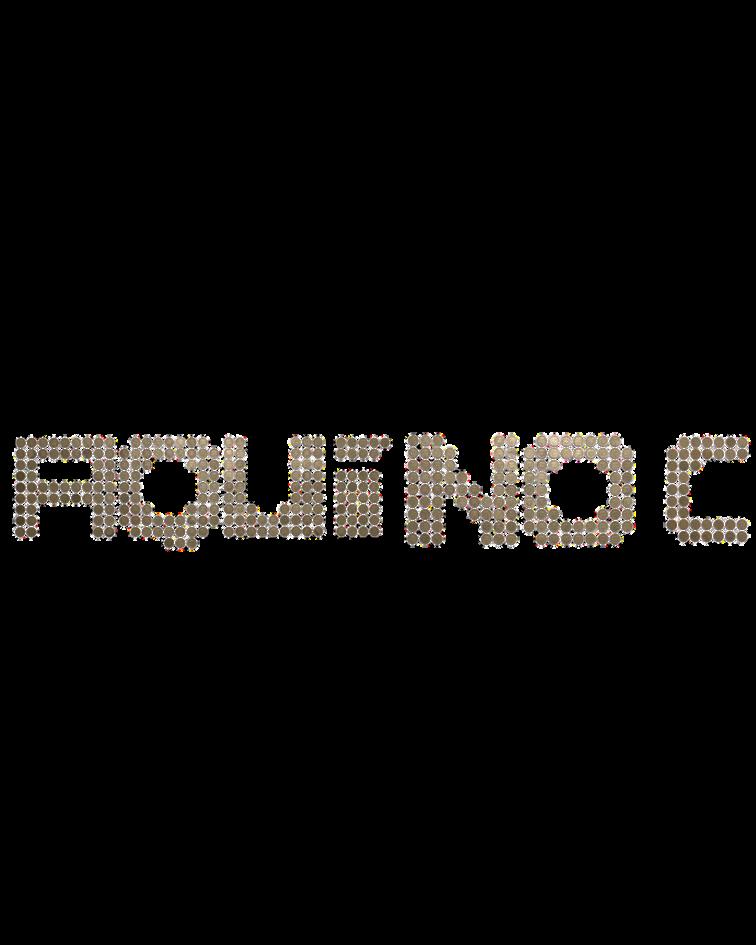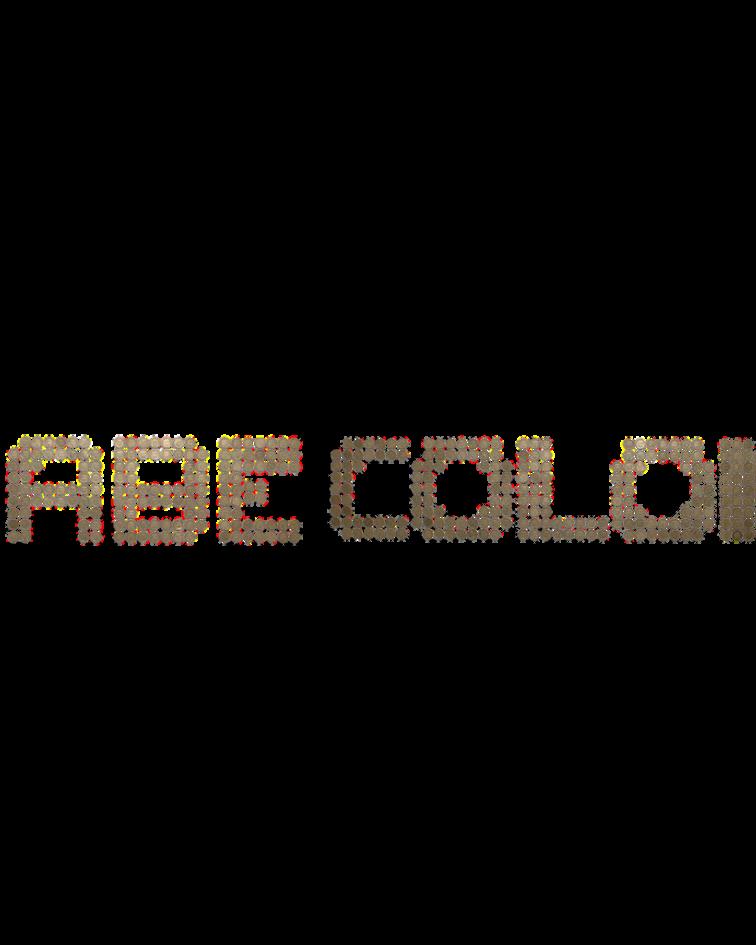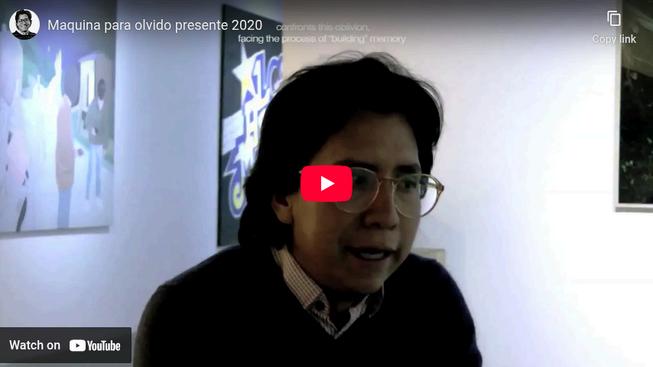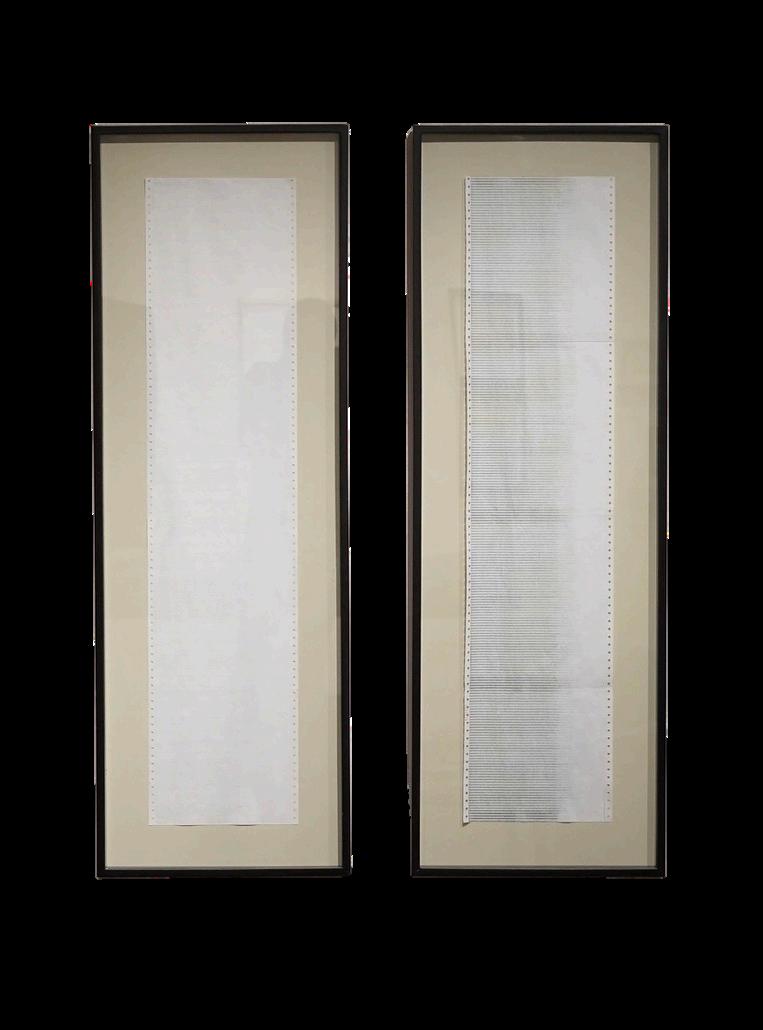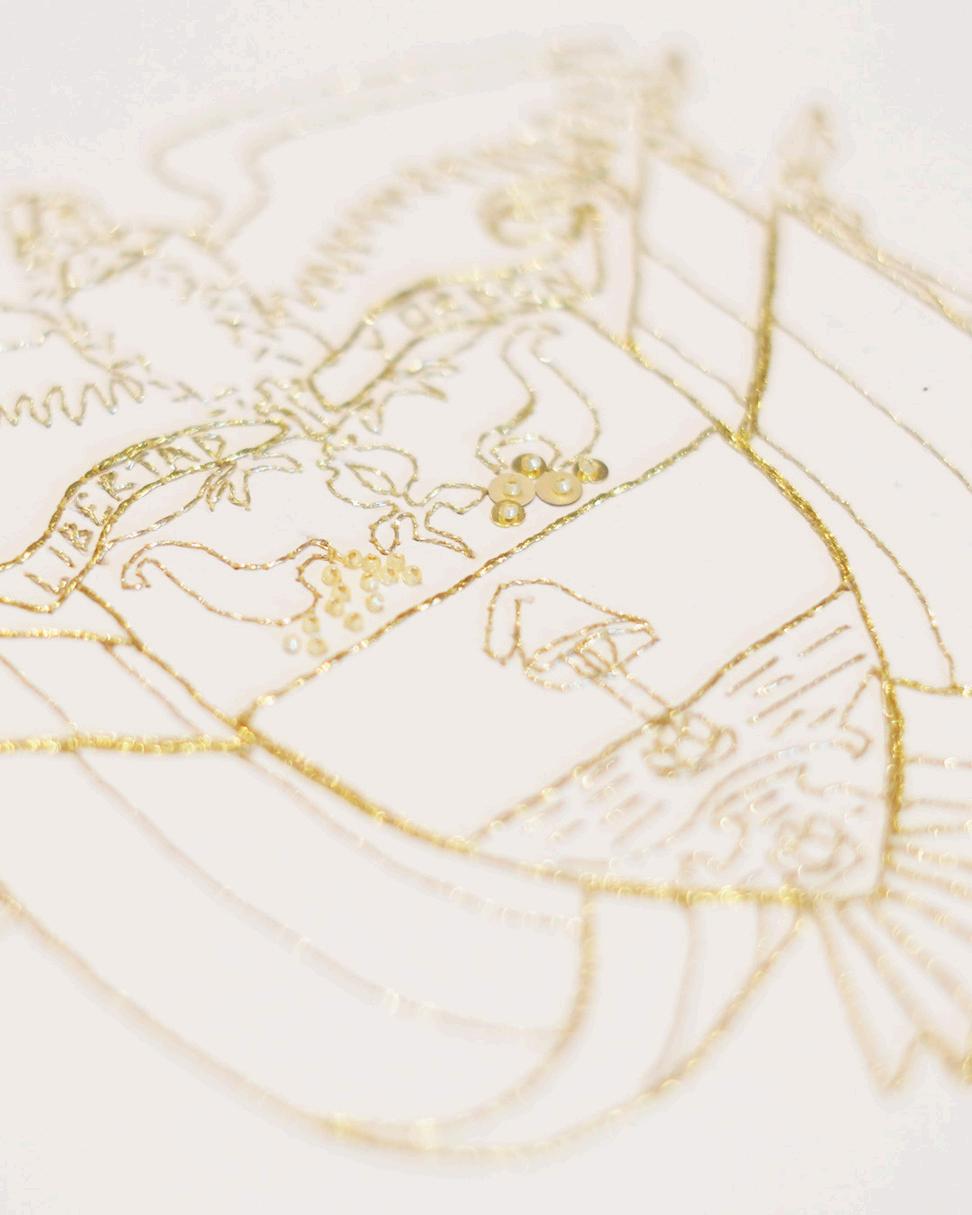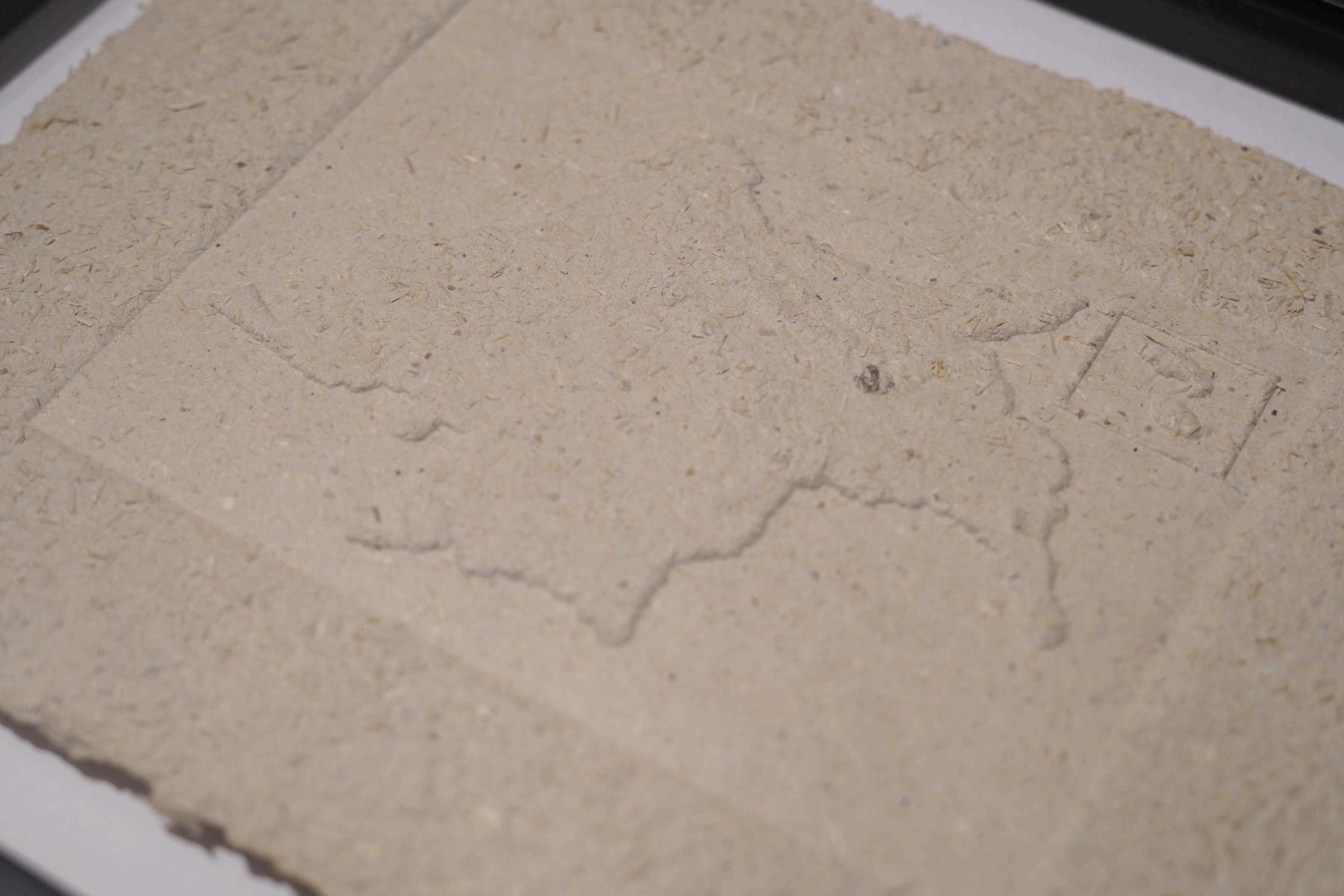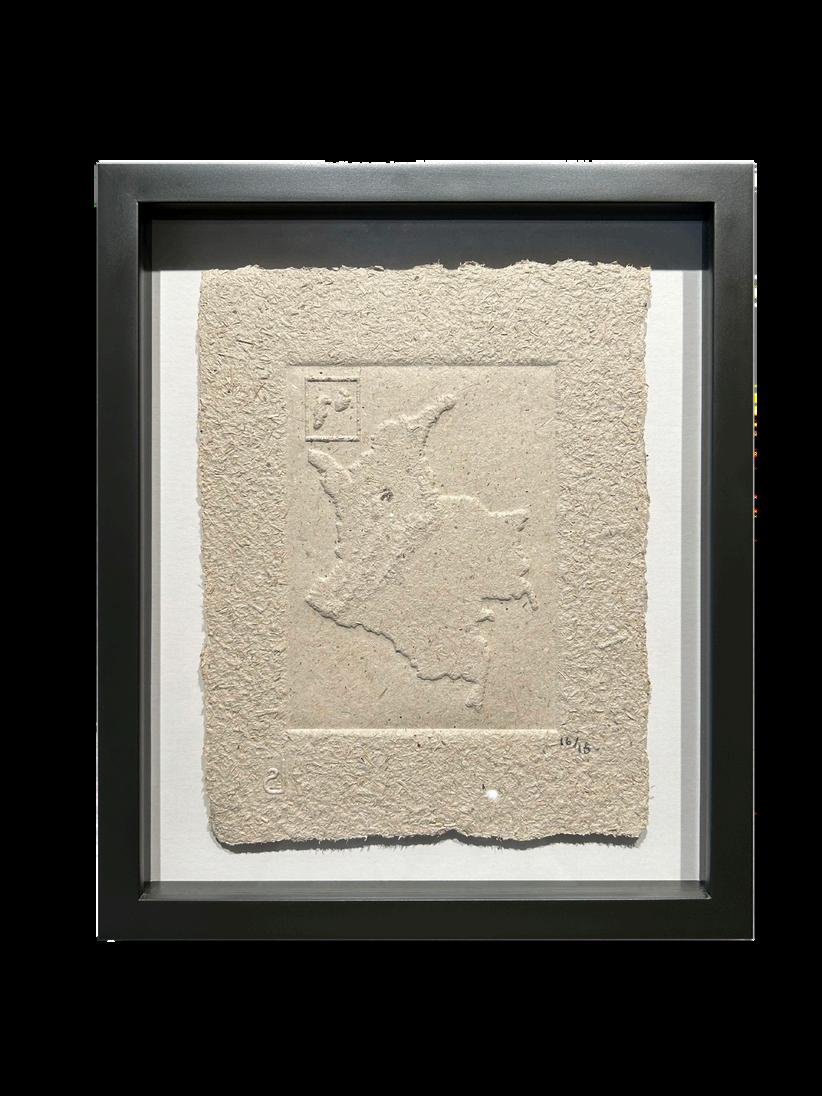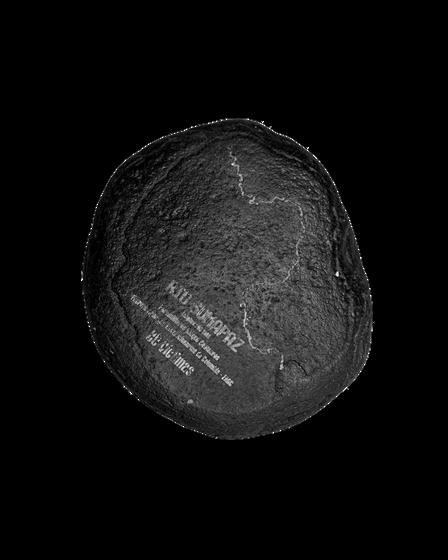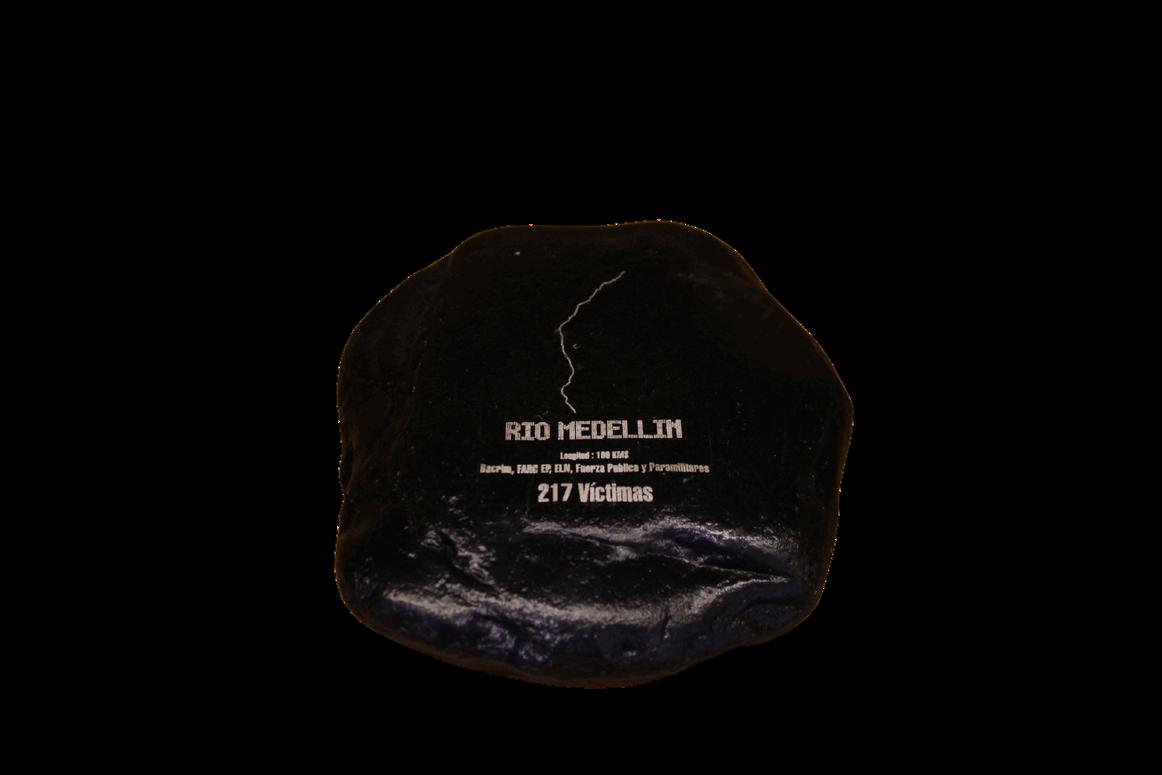HACKING SIGNS
This exhibition brings together works from different periods by Jorge Luis Vaca Forero, and can therefore be understood as a small anthology. Having these pieces gathered allows us, as the viewers, to observe and eventually identify the structural elements that run through the artist’s thought: recurring themes that appear time and again throughout his creative practice. In this text, I would like to highlight some of these themes.
In Vaca’s work, intersections arise between individual memory, Collective Memory (that which is narrated, inhabited), and official memory: proper to the State and the Nation. This superimposition of memories also implies interventions in how they are constructed, which include forms of forgetfulness: necessary forgettings, guilty omissions, and unforgivable unmemories Within these folds lie multiple layers and competing interests
A second axis running through his work is the study of national symbols, such as the coat of arms and the map. The coat of arms represents what is believed and hoped for in the Nation. The map, on the other hand, stabilizes borders and territorial limits, delimiting divisions between departments, and conventionalizes materials, hydrological, and ecosystemic richness Cartographic conventions condense discourses about the territories To a large extent, the same occurs with banknotes and coins: they express the Nation through other repertoires, retrieving what has been deemed memorable human figures, pre-Columbian elements, historical moments. Faced with this set of tools that restate the national narrative, Vaca comments with irony, at times with bitterness, on what is usually left out: the shameful, the terrible, that which is excluded from official memory Thus, national symbols are twisted, and the patriotic hymn breaks, falters
A third recurring device in his work is the use of stock phrases, slogans, and mottos National rituals consolidate the illusion of nationhood through such linguistic repertoires. “Liberty and Order” reads the upper banner of Colombia’s coat of arms. Phrases are quoted that, throughout history, have been spoken by politicians, writers, artists, and other public figures who have left a mark on Collective Memory Vaca gathers them, reconsiders them, and introduces them into his works or their titles
Finally, in this meticulous body of work product of long processes of study, experimentation, and review of mediums, devices, and resources Vaca continually examines statistics and numerical data, another way of looking at the Nation-State through abstraction: numbers speak about murdered leaders, displacements, and kilometers of disputed territory
This show invites us to play, to think, to smile with irony. With wit and sharpness, Vaca uncovers technological and mechanical loopholes through which he can laugh at the nation and its narratives Because that wounded nation is loved, and its ongoing tribulations hurt so deeply.
Ana María Lozano Rocha Independent Curator
Transposiciones Patrias (2018) es una serie que investiga la construcción de la imagen de país desde la ley y los discursos institucionales. Mediante la apropiación de datos estadísticos y su transformación en imágenes, el proyecto genera una superposición de signos patrios en un espacio bidimensional. Este gesto crea un choque en la lectura, evidenciando la imposibilidad del Estado de cumplir plenamente sus funciones. La acumulación de información convierte el soporte en un espacio vacío de significado, donde se cuestiona la capacidad de la institucionalidad para validar al individuo Las piezas fueron realizadas en la Residencia Espacio Estudio 74, en Tota, Boyacá.
Transposiciones Patrias (2018) is a series that investigates the construction of the national image through law and institutional discourse. By appropriating statistical data and transforming it into images, the project creates a superposition of patriotic symbols in a two-dimensional space. This gesture generates a disruption in reading, revealing the State’s inability to fully fulfill its functions The accumulation of information turns the surface into a space emptied of meaning, questioning the institutional capacity to validate the individual. The works were produced during the Espacio Estudio 74 Residency in Tota, Boyacá.
Instalación
145 x 85 x 765 cm
2018 Transposiciones Patrias
Homeland Transpositions
Installation
57 x 33 ½ x 30 ¼ in
2018
Instalación
7 x 5 x 11 cm
2018 Transposiciones Patrias #4
Homeland Transpositions #4
Installation
57 x 33 ½ x 30 ¼ in 2018
$5.520.000 COP
“Si hiciéramos un minuto de silencio por cada una de las víctimas del conflicto armado, el país tendría que estar en silencio durante diecisiete años”, dijo Francisco de Roux hace ya siete años. Estas palabras corresponden al cierre y posterior entrega del Informe Final de la Verdad en junio de 2022 Colombiano, a las Víctimas y a este proceso. Esta obra es una r transcurrir del tiempo y las po promesas conexas a este cier construcción de un nuevo país.
OTUL“If we were to observe one minute of silence for each victim of the armed conflict, the country would have to remain silent for seventeen years,” said Francisco de Roux seven years ago. These words marked the conclusion and subsequent delivery of the Final Report of the Truth Commission in June 2022 to the Colombian Government, the victims, and other actors involved in the process. This work is a reflection on the passage of time and the possible visions and promises tied to this moment of closure, which aspires to the construction of a new nation.
Objeto electrónico hecho con madera de cedro, micro controlador Esp 23, circuito de pantalla led, luces y reloj
42 x 42 x 5 cm 2024
Mouring
Electronic objetc made of cedar wood, Esp 23 microcontroller, LED screen circuit, lights and clock
16 ½ x 16 ½ x 2 in 2024
$13.800.000 COP
Luto
cómo la historia contemporánea se vuelve difusa con el paso del tiempo
La obra opera en dos niveles: primero, como instalación autónoma, donde las monedas adheridas a la pared desaparecen aleatoriamente; segundo, al proponer una relectura del trabajo de Caro en diálogo con la serie Ausencias, abriendo la posibilidad de que los visitantes se lleven una moneda sin autorización del personal del espacio expositivo. o W n a
how contemporary history becomes diffuse over time
The piece operates on two levels: first, as a self-contained installation where coins gradually and randomly disappear from the wall; second, by proposing a rereading of Caro’s work in dialogue with the Ausencias series, inviting visitors to take a coin home without the authorization of the exhibition staff.
Aquí no cabe Colombia
Intervención sobre pared con 1000 monedas de 100 pesos
26 x 437 cm 2021
Wall intervention with 1000 coins of 100 COP
10 x 172 in 2021 Colombia doesn't fit here
$ 10.350.000 COP
Juguete para un país amnésico (2023), es parte de la serie Dibujos Nacionales, propone una crítica a la estructura del país como promesa fallida. Mediante un objeto de madera y un juego de luces, el usuario repite las palabras paz, justicia, reconciliación y reintegración, extraídas de discursos presidenciales El error y la repetición activan una metáfora sobre la incapacidad de la Nación para cumplir y narrar sus promesas fundacionales.
Toy for an Amnesic Country (2023), is part of the National Drawings series, critiques the nation’s structure as a failed promise. Through a wooden object and a light-based game, users repeat the words peace, justice, reconciliation, and reintegration terms drawn from presidential speeches Error and repetition activate a metaphor reflecting the Colombian Nation’s inability to fulfill and narrate its foundational promises.
Juguete para un país amnésico
Objeto electrónico hecho con madera de cedro, circuito y luces
18 x 18 x 5 cm
2023
Toy for an amnesic country
Electronic object made of cedar wood, circuit and lights
Máquina para un olvido presente aborda la fragilidad de la memoria colectiva Una impresora repite fragmentos del informe ¡Basta Ya! del Grupo de Memoria Histórica, superponiendo testimonios de víctimas Otra máquina, conectada a Twitter, imprime mensajes desde la cuenta @que olvidamos, pero la tinta se borra y el sistema elimina el contenido tras un minuto. La cuenta permanece vacía. Esta obra de Jorge Luis Vaca evidencia lo efímero del recuerdo y la dificultad de construir memoria en un país marcado por el conflicto. Invita al espectador a reflexionar sobre los intentos fallidos y los esfuerzos necesarios para no olvidar.
Machine for a Present Oblivion explores the fragility of collective memory. A printer repeats fragments from the ¡Basta Ya! report by the Historical Memory Group, layering victims’ testimonies. A second machine, linked to Twitter, prints messages from the account @que olvidamos, but the ink fades and the system deletes the content after one minute The account remains empty This work by Jorge Luis Vaca reveals the fleeting nature of remembrance and the challenge of building memory in a conflict-ridden country. It invites viewers to reflect on failed attempts and the ongoing effort required to preserve what has been lost.
Máquina para un olvido presente
Machine for a present oblivion
Impresiones y registro resultado de la instalación de la máquina para un olvido presente
121 x 41 x 3 cm 2013 - 2015
Prints and record resulting from the installation of The Machine for a Present Forgetting
47 ½ x 16 ¼ x 1 ¼ in 2013 - 2015
Riesgo Controlado (2017) es u obras que surge de un interés mediatización de la informació partiendo de una tragedia; natural del municipio de San Agreda de Mocoa, en Putuma como referente dicho hecho, se investigación ligada a la med este tipo de fenómenos, los cu ser catalogados como elemento pero desconocidos para el general. Después de visitar var se encontró que no es la primer fenómeno de este tipo ocurre y es el único municipio donde h desastres. La obra invit cuestionamiento enfocado haci de la información y la forma c sido socializada
Controlled Risk (2017) is a ser that stems from an inter mediatization of information taking as its starting point a natural disaster that struck the of San Miguel de Agreda de M department of Putumayo. Using this event as a reference developed into a research pro such phenomena are portrayed events that are frequent unfamiliar to the general p visiting several archives, it becam this was not the first time suc had occurred, nor was Moco municipality affected by eve nature.
The work invites viewers to q information is handled and which it has been disseminated
Riesgo Controlado: Mocoa
Serigrafía con tres tintas sobre Papel Black Style 350 gr silk y tres capas de vidrio sobrepuesto
45 x 55 cm
Ed. 16 + 4 P.A.
2017
Controlled Risk: Mocoa
Three-ink screen print over Black Style 350 g silk paper with three overlapping glass layers
17 ¾ x 21 ¾ in.
Ed. of 16 +4 A.P.
2017
$ 2.760.000 COP
Promesas de Nación
Bordado en hilo metalizado 59 x 53 cm 2024
Promises of Nation
Embroidery with metallic thread 23 ¼ x 20 ¾ in 2024
$ 4.050.000 COP
Bonanza Cocalera (2021) y Bonanza Marimbera (2021) abordan el imaginario nacional desde el narcotráfico como fenómeno histórico, cercano tanto al Estado como a la población colombiana. Usando el “mapa de Colombia” como signo, las obras confrontan los efectos de la coca y la marihuana en distintos actores: campesinos, intermediarios y consumidores Las piezas invitan a reflexionar sobre el desconocimiento general del conflicto y el rol actual de los grupos armados. El mapa funciona como índice inestable de la relación entre territorio y Estado, evidenciando vínculos con momentos históricos entre los años setenta y la actualidad.
Bonanza Cocalera (2021) and Bonanza Marimbera (2021) explore national imagery through the historical lens of drug trafficking, closely tied to both the Colombian state and its people. Using the “map of Colombia” as a symbol, the works highlights the effects of coca and marijuana on farmers, intermediaries, and consumers They invite to think about the public’s limited understanding of the drug war and the ongoing role of armed groups The map serves as a shifting index of the stateterritory relationship, revealing connections to specific historical periods from the 1970s through to the present.
Colombia Cocalera
Grabado en intaglio sobre papel de celulosa, algodón y hoja de coca
50 x 34 cm
Ed 4/16
2021
Coca-Growing Colombia
Intaglio print on cellulose, cotton, and coca leaf paper
19 ¾ x 13 ½ in
Ed 4/16
2021
$ 4.600.000 COP
Colombia Marimbera
Grabado en intaglio sobre papel de celulosa, algodón y bagazo de marihuana
50 x 43 cm
Ed 16/16
2021
Marijuana-Growing Colombia
Intaglio print on cellulose, cotton, and marijuana pulp paper
19 ¾ x 13 ½ in
Ed 16/16
2021
Constituciones (2014 – 2015) nace de una investigación sobre la ley como construcción visual y escrita. La obra contrasta la memoria fijada en un soporte con la automatización de la sobrescritura mediante un mecanismo específico. A través de artefactos textuales, se hace referencia a las 16 constituciones que ha tenido Colombia, planteando una reflexión sobre la identidad jurídi d l í l b d cómo la ley artic señala proceso desaparición de discursos legal constitucional d
Constituciones research proce constructed and work contrasts f the automation mechanism Usin the 16 constituti on the nation’s l how law connec and highlights p disappearance o legal discourse constitutional his
Constituciones
Instalación hecha con madera, motores y lápices Papel Fabriano Rosaspina 250 gr. 20 x 20 x 15 cm 2014 - 2015
Constitutions
Installation made with wood, motors, and pencils. Fabriano Rosaspina 250 gsm paper. 8 x 8 x 6 in 2014 - 2015
$7.360.000 COP
Intenté Escribir Colombia (2016 – 2018) surge de una investigación sobre la construcción visual de palabras ligadas al Estado colombiano. La serie de objetos-máquina explora la relación entre escritura, memoria e instituciones, enfocándose en términos como COLOMBIA, PAZ, FINAL y ACUERDO Estas piezas evidencian la falla estructural de las instituciones para cumplir su propósito, proponiendo una metáfora sobre la indiferencia ciudadana A través de materiales y acciones, se manifiesta la imposibilidad de la máquina para completar la escritura, como un gesto que cuestiona cómo se construye una nación. La obra fue realizada en la Residencia Fundación Casa Estudio 74, en Tota, Boyacá.

When I Tried to Write Colombia (2016 – 2018) stems from research into how words tied to the Colombian state are constructed and visualized. This series of machine-objects engages themes like peace, end, and agreement to explore memory and institutional failure. The work reflects on the citizens’ indifference toward institutions that cannot fulfill their intended roles Through materials and actions, the pieces form a metaphor: a machine unable to complete the act of writing This gesture challenges the very process of nation-building. The project was developed during a residency at Fundación Casa Estudio 74 in Tota, Boyacá.
Intenté Escribir Colombia
Madera, motores, lápices
28 x 164 x 7,5 cm
Ed: 1/3 + P A 2018
When I Tried to Write Colombia
Wood, motors, pencils.
11 x 64 x 3 in
Ed: 1/3 + A P 2018
$ 16.550.000 COP
Ausencias - Coca Cola Colombia (2018) forma parte de la serie Dibujos Nacionales, que propone una revisión crítica de la historia del arte colombiano. La obra retoma imágenes icónicas como acto de cita y apropiación, sugiriendo nuevas lecturas sobre la realidad nacional. A través de perforaciones retroiluminadas, se genera una imagen que desaparece parcialmente, dejando visible un vacío que interpela al espectador Esta operación convierte el signo en ausencia y cuestiona los relatos oficiales, proponiendo una actualización simbólica del contexto político y social. Así, la obra reflexiona sobre la construcción de memoria y la identidad en la Colombia contemporánea.
Colombia
Caja de luz y perforaciones sobre papel Red Style 350 gr. Silk 104 x 34 cm 2018 - 2021
Coca Cola
Ausencias - Coca Cola Colombia (2018) is part of the Dibujos Nacionales series, which offers a critical reflection on Colombian art history. The piece reappropriates iconic images as a form of quotation, inviting new interpretations of national reality. Using backlit perforations, the image is partially erased, revealing an emptiness that confronts the viewer This gesture transforms the symbol into absence and questions official narratives, proposing a symbolic update of the political and social context. The work reflects on how memory and identity are constructed in contemporary Colombia, highlighting the fragile relationship between collective symbols and their current meanings.
Coca Cola Colombia
Lightbox and perforations on Red Style 350 g silk paper 40 ¼ x 13 ½ in 2018 - 2021
$8.750.000 COP
Ausencias – Promesas de Nación propone una intervención sobre la moneda colombiana, símbolo central de la economía nacinoal Las palabras perforadas y retroiluminadas en los billetes representan valores fundacionales para Colombia, evidenciando su contradicción con la realidad. Al inutilizar el billete como moneda, se cuestiona la legitimidad del Estado y la fragilidad de sus promesas de paz, bienestar y democracia. La obra genera un cortocircuito entre el valor simbólico del dinero y los ideales que representa, replanteando la idea de nación contemporánea reducida a dinámicas económicas y alejadas de sus compromisos sociales
Absences – Nation Promises is a direct intervention on the Colombian currency Words are cut and backlit into the bills, referencing the founding values of the Colombian nation while confronting their symbolic weight highlighting their frequent violation by the state. By rendering the currency unusable, these artworks question state legitimacy and challenge the gap between economic power and its democratic promises. In this sense, they create a short circuit between the monetary value expressed in these elements and the ideological claims made by the state, prompting a critical rereading of the nation as a concept shaped primarily by exchange and detached from the ideals it claims to uphold
Ausencias - Promesas de Nación
Caja de luz, billetes y perforaciones sobre papel Black Style 350 gr Silk
22 x 13 cm 2023
Absences - Nation Promises
Lightbox, bills and perforations on Black Style 350 g. silk paper
8 ¾ x 5 ¼ in. 2023
$5.700.000 COP
Repúblicas - Fractura
Grabado intaglio
Papel Fabriano Rosaspina 250g
49 cm x 39 cm
2017
COP
Repúblicas – Fractura
Intaglio print Fabriano Rosaspina
250g paper
1929 x 15 35 in 2017

